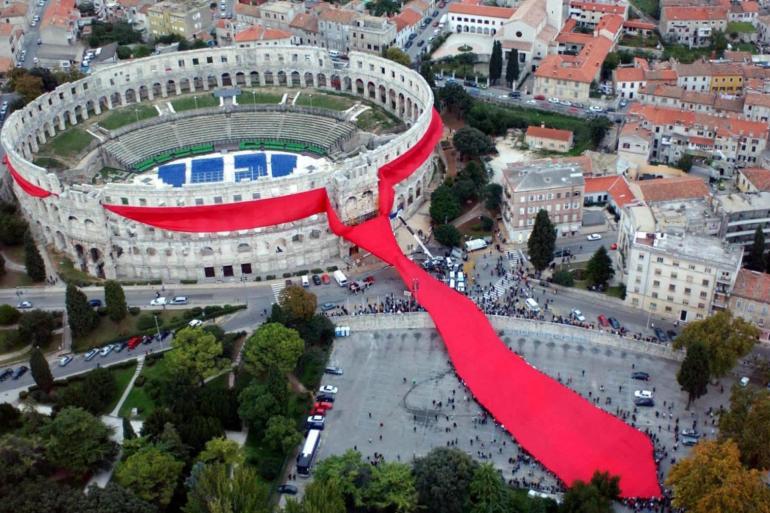Necktie took Western Europe by storm in the 17th century, courtesy of ruthless and battle-hardened Croatian mercenaries in the service of the French king Louis XIII during the Thirty Years War (1618-1648).
Aside from their pitiless reputation, those fierce cavalry specialists were known for colourful knotted neckcloths.
 Photo: Zvonimir Atletic
Photo: Zvonimir AtleticCommon soldiers wore bright scarves made of cheaper materials and officers wore scarves made of fine cotton or silk
The usual legend says that it all started when Croatian soldier got a scarf from his fiancee before going to war as a sigh she will remain faithful. His fellow soldiers saw it and liked it so much they started wearing the similar garment as well.
Those soldiers were all born and raised within the Croatian Military Frontier, fighting the relentless Turks for most of their lives.
Looking nothing like a typical central European army, Croats wore bright coloured garments like their Asian enemies. Neck scarves were a part of Croatian battle dress to identify each other in battle since they had no standardised uniforms at the time.
Flamboyant and distinct style of Croatian mercenaries was quickly adopted by the French soldiers fighting alongside them.
Common soldiers wore bright scarves made of cheaper materials and officers wore scarves made of fine cotton or silk.
Louis XIII of France decided to enlist a bunch of them in 1635. They remained his elite unit even after the Thirty Years War ended, and in 1667 they were reorganised and a special regiment named Royal Cravates was formed. Three of their commanders rose to the military rank of Marshall, adding to their prestige.
Flamboyant and distinct style of Croatian mercenaries was quickly adopted by the French soldiers fighting alongside them.
 Photo: Academia Cravatica
Photo: Academia CravaticaThe largest cravat ever made was tied around the Roman amphitheater in the city of Pula
The fashion was soon brought home to Paris where it was adopted by trendsetters and members of the court.
So the French phrase "a la Croatte" (meaning "the way the Croats used to tie it") quickly became the source of a new French word - cravat.
Great breakthrough came after the Louis IV decided that he had enough of the ruff collars that were all the rage back then. He decided that shifting to cravat is the way to go. New and fashionable item allowed him freedom of movement while requiring little maintenance.
Louis IV decided that he had enough of the ruff collars and switched to cravat, starting a new fashion trend that lives to this day.
The cravat spread to England when Charles II returned to England after nine years in exile at the French court of Louis XIV, restoring the monarchy while wearing the cravat. Soon it spread from England to its American colony and to the rest of the world.
By the end of the 17th century, the necktie had become firmly established as a vital fashion accessory and is used all over the world as a sign of prestige to this day.
And now it has its own international appreciation day - October the 18th is the International Necktie Day.
Feel free to brag with this trivia, and tell your friends the real history behind that fancy necktie you are wearing.



